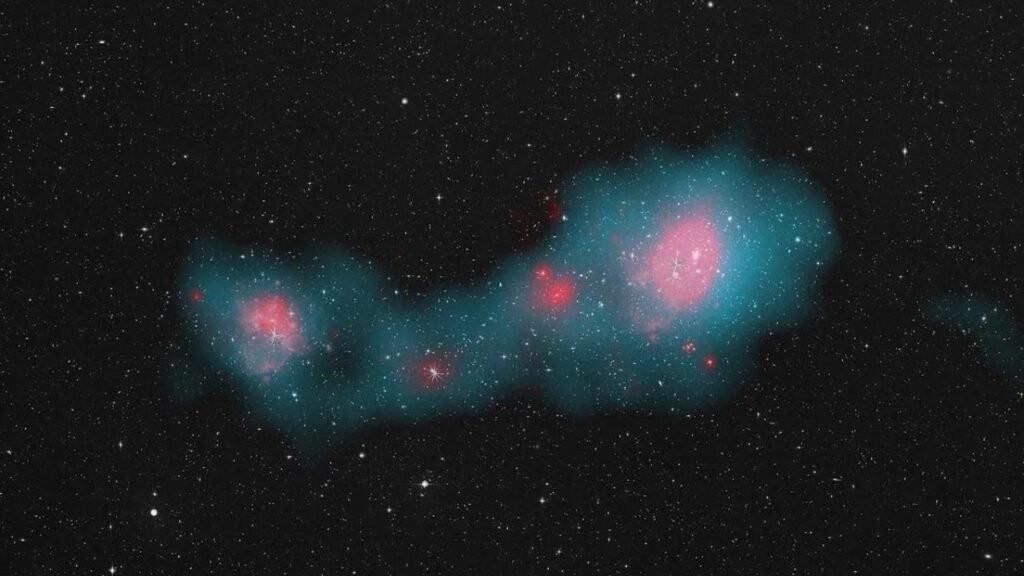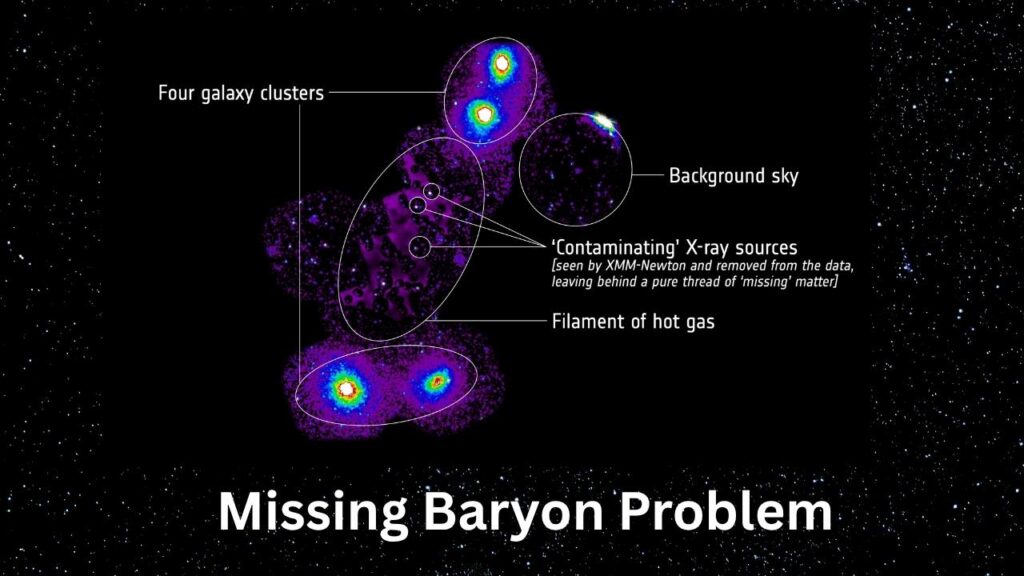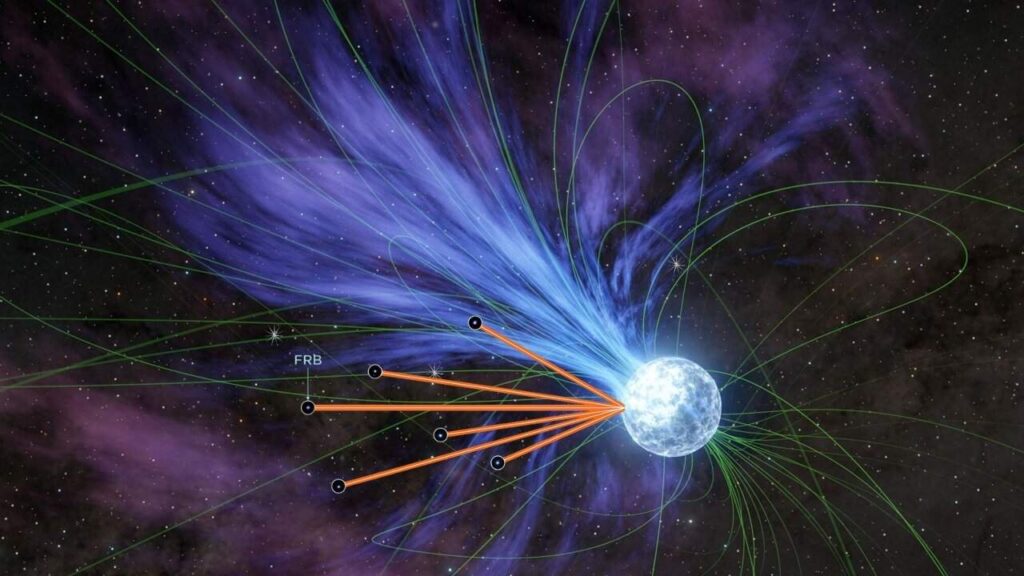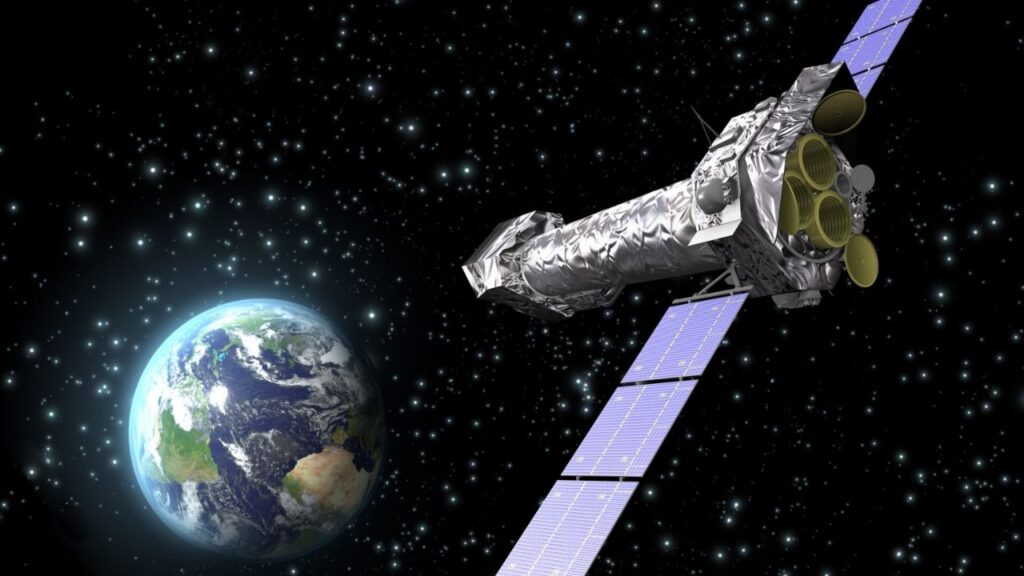Astronomers Claim to Have Found the Universe’s Missing Matter: For more than half a century, astronomers have been searching for the universe’s “missing matter”—not the invisible dark matter that makes up most of the cosmos, but the ordinary stuff that forms stars, planets, and even us. Now, thanks to groundbreaking new observations, scientists have finally found it. This discovery not only solves a major cosmic mystery but also confirms long-standing predictions about how our universe is structured.

Imagine the universe as a giant spider’s web, but instead of silk, it’s made of faint, hot gas. These invisible threads, called the cosmic web, stretch between galaxies and galaxy clusters, forming the largest structures in the cosmos. For decades, astronomers knew that about half of the ordinary matter—made of protons, neutrons, and electrons—was missing from their observations. Now, using powerful telescopes and mysterious radio signals from deep space, researchers have traced this missing matter to the vast spaces between galaxies, where it forms a diffuse “fog” of gas.
Astronomers Claim to Have Found the Universe’s Missing Matter
| Topic | Key Data/Stats | Professional Insights |
|---|---|---|
| Missing Matter Found | 76% in intergalactic medium, 15% in galaxy halos, 9% in galaxies | Confirms cosmological models, validates cosmic web structure |
| Detection Methods | Fast Radio Bursts (FRBs), X-ray telescopes (XMM-Newton, Suzaku) | FRBs act as cosmic flashlights, X-rays reveal hot gas filaments |
| Mass of Filament | 10x Milky Way, 23 million light-years long | Direct evidence for cosmic web filaments |
| Ordinary Matter in Universe | 15% of total matter (rest is dark matter) | Ordinary matter is only a small fraction |
| Significance | Solves missing baryon problem, supports Big Bang models | Advances understanding of universe’s structure |
The discovery of the universe’s missing matter is a triumph for science and a testament to human curiosity and ingenuity. By using innovative techniques and powerful telescopes, astronomers have solved a decades-old puzzle and confirmed that the universe is even more interconnected than we imagined. This finding not only deepens our understanding of the cosmos but also inspires future generations to keep exploring the mysteries of space.
What Is the “Missing Matter” in the Universe?
Before we dive deeper, let’s clarify what we mean by “missing matter.” The universe contains two main types of matter: dark matter and ordinary matter. Dark matter is invisible and only detectable through its gravity, while ordinary matter is everything we can see—stars, planets, dust, and even ourselves. Scientists have long known that ordinary matter makes up only about 15% of all matter in the universe, with the rest being dark matter.
However, when astronomers added up all the ordinary matter they could see in stars, galaxies, and gas clouds, they found that about half of it was missing. This became known as the “missing baryon problem.” (Baryons are particles like protons and neutrons that make up ordinary matter.) For decades, scientists wondered: Where is this missing matter hiding?

How Did Astronomers Find the Missing Matter?
1. Using Fast Radio Bursts (FRBs) as Cosmic Flashlights
One of the most exciting breakthroughs came from studying fast radio bursts (FRBs). FRBs are incredibly powerful, short-lived pulses of radio waves that come from distant galaxies. Their exact origin is still a mystery, but scientists believe they might be produced by highly magnetized neutron stars.

When FRBs travel through space, they pass through clouds of gas. This gas causes the radio waves to slow down and spread out, much like sunlight passing through a prism. By measuring how much the radio waves are dispersed, astronomers can calculate the amount of matter along the FRB’s path.
In the latest study, researchers analyzed 69 FRBs, some of which came from as far as 9 billion light-years away—the most distant ever recorded. Using this data, they could map out where the missing matter was hiding. The results showed that about 76% of ordinary matter is spread out in the thin gas between galaxies (the intergalactic medium), 15% is in the halos around galaxies, and only 9% is inside galaxies as stars or cold gas.
2. Direct Detection with X-ray Telescopes
Another major piece of evidence came from X-ray telescopes like the European Space Agency’s XMM-Newton and Japan’s Suzaku. These telescopes can detect extremely hot gas that is invisible to optical telescopes.

Recently, astronomers discovered a massive filament of hot gas stretching 23 million light-years between four galaxy clusters. This filament is 10 times more massive than our Milky Way galaxy and is part of the cosmic web predicted by cosmological models. This direct observation confirmed that the missing matter is indeed hiding in these vast, thread-like structures.
Why Is This Discovery So Important?
This discovery is a huge milestone for cosmology. For decades, scientists have relied on models that predicted the existence of a cosmic web of gas filaments. But until now, there was no direct evidence that this web contained the missing matter.
Finding the missing matter confirms that our understanding of the universe is on the right track. It also gives us new insights into how galaxies form and evolve. Galaxies are not isolated islands in space; they are connected by these invisible threads of gas, which act like highways for matter and energy.
A Step-by-Step Guide: How Astronomers Solved the Missing Matter Puzzle
Let’s break down the process into easy-to-follow steps:
- Identify the Problem:
Astronomers noticed that about half of the ordinary matter in the universe was missing from their observations. - Develop Theories:
Scientists predicted that the missing matter was hiding in a diffuse “cosmic web” of gas between galaxies. - Use New Tools:
Astronomers used fast radio bursts and X-ray telescopes to detect and measure the invisible gas. - Analyze Data:
By studying how FRBs are dispersed and by directly observing hot gas filaments, researchers mapped out the distribution of missing matter. - Confirm the Findings:
The data matched the predictions, confirming that the missing matter is in the intergalactic medium and cosmic web.
Practical Advice and Examples
For Students and Young Readers:
If you’re interested in space and science, this discovery shows how important it is to keep asking questions and to use creativity in solving mysteries. Astronomers didn’t give up when they couldn’t see the missing matter—they invented new ways to “see” it using radio waves and X-rays.
For Professionals and Educators:
This breakthrough highlights the value of collaboration and innovation in science. It also shows how combining different types of data (radio, X-ray, and optical) can lead to major discoveries. If you’re teaching astronomy or physics, this is a great example to discuss with students.
Example:
Imagine you’re looking for a hidden treasure in a dark room. You can’t see it, but you have a flashlight that shines different colors. By seeing how the light changes as it passes through the room, you can figure out where the treasure is hidden. That’s exactly what astronomers did with FRBs and the missing matter!
Could the Webb Telescope Finally Reveal If Supermassive Black Holes Formed Directly?
Innovative Drill Technology May Offer a Sustainable Energy Solution
MIT Introduces New 3D Chip Design for Improved Speed and Power Efficiency
FAQs About Astronomers Claim to Have Found the Universe’s Missing Matter
1. What is the difference between dark matter and ordinary matter?
Dark matter is invisible and only detected by its gravity, while ordinary matter is everything we can see and touch, like stars, planets, and people.
2. How did astronomers find the missing matter?
They used fast radio bursts (FRBs) to measure the amount of matter along their paths and X-ray telescopes to directly observe hot gas filaments between galaxies.
3. Where is the missing matter located?
Most of it (about 76%) is in the thin gas between galaxies, 15% is in the halos around galaxies, and 9% is inside galaxies as stars or cold gas.
4. Why is this discovery important?
It confirms long-standing theories about the structure of the universe and helps us understand how galaxies form and evolve.
5. Can we see the missing matter with our eyes?
No, the missing matter is mostly hot, thin gas that is invisible to optical telescopes. We need special instruments like radio and X-ray telescopes to detect it.






